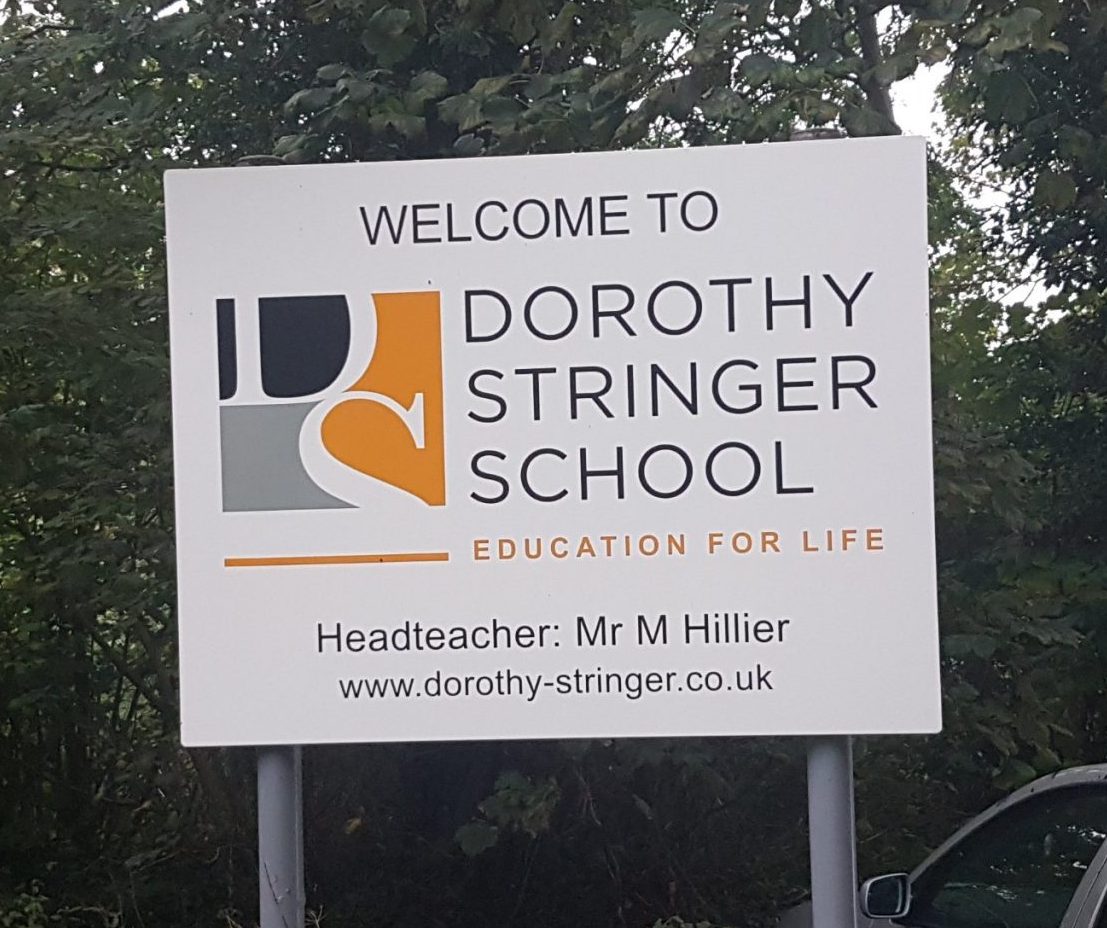Governors at a popular secondary school have objected to changes to admissions policies proposed by Brighton and Hove City Council.
The council wants to bring in “open admissions” from September next year for children living in four secondary school catchments – BACA, PACA, Longhill and Patcham High.
Currently, they have only one choice of secondary school. The change would give them a better chance of a place at schools such as Dorothy Stringer, Varndean, Blatchington Mill and Hove Park.
A consultation is under way and due to end on Friday 31 January.
Today (Friday 24 January), Dorothy Stringer’s governors said that they objected to “ring-fencing” 20 per cent of places for pupils from outside the catchment.
If the council brings in the change, about 60 pupils starting at Stringer in September next year would be from outside the school’s catchment.
The governors said: “The risk around this proposal is that children living locally will be displaced by those who will have to travel.
“Overall, this will mean many more children in the city having to travel to schools that are further away from where they live.
“Understandably, this is of great concern to many families in our local community. For this reason, as a governing board, we are unable to support this proposal as it stands.
“These proposed changes do not include all schools in the city, eg, academies and faith schools, and therefore would have a disproportionate impact on the community schools under local authority control in Brighton, including ours.”
The governors are also concerned about transport because of a proposal changes to add much of Whitehawk to the Dorothy Stringer and Varndean catchment and remove Kemp Town.
The governors said: “We are proud that we already welcome students from across the city. However, we would wish to be assured that transport arrangements will be provided by the local authority to enable equity of access.”
When the admissions proposals went before the council’s People Overview and Scrutiny Committee on Tuesday 14 January, the Labour deputy leader of the council, Jacob Taylor, said that a review of home to school transport was planned this year.
Stringer governors also said that they wanted more data on the effects of giving admissions priority to pupils receiving free school meals (FSM) from September this year.
Last September, 34 per cent of the new year 7 cohort qualified for free school meals. The new policy aims to balance the proportion of pupils in secondary schools receiving free school meals – at about 30 per cent.
The governors said: “We need to see the data on FSM applications this year to assess the impact of the change in admissions criteria already in place before introducing further changes under the current proposal.
“A new admissions criterion has already been implemented by the council for 2025-26 secondary school applications.
“This will in and of itself have an impact on our school and other secondary schools’ community distribution, and we welcome the opportunity to push for more equitable choices for families across the city.”
The governors said that they had already planned to reduce the school’s published admission number (PAN) from 330 to 300 from September next year – as suggested in the consultation.
Since 2019, the council has tried to reduce admissions at primary and infant schools as pupil numbers have fallen. Now the years with low birth rates are affecting secondary schools.
School funding is mainly per pupil but costs are more closely linked to the PAN so the council wants to reduce the intake at three secondaries, with 431 spare places city-wide forecast by 2031.
The governors said: “We recognise that our pupil numbers have grown over the years which has had a detrimental impact on the logistical operation of the school due to the geographical limitations of the site.
“In addition, we acknowledge the falling pupil numbers across the city and are committed to supporting the wider family of schools across the city by reducing our PAN.”
Other proposed PAN reductions would affect Longhill – down from 270 to 210 pupils – and Blatchington Mill, with a reduction from 330 to 300 pupils.
As well as tackling falling pupil numbers, the council aims to address the “attainment gap” between disadvantaged children and those not eligible for free school meals.
At the time of writing, more than 1,900 people had responded to the consultation on the Your Voice section of the council’s website.









Doesn’t surprise me they don’t want estate kids going to their posh school. Might lower the tone.
I’m not sure you actually read the article. Clearly states that the took 34% FSM last year – this is higher than the city average. Hardly looks like they restricting access to the ‘posh’
I agree with the new proposals and actually I would have gone further and have huge catchment areas with 3 schools in each and mix the whole thing up totally. That would work brilliantly to really break up the divisions seen in Brighton and Hove currently. No more schools just for estate kids and no more schools for middle class kids. One of the noises against the proposals is kids getting on buses to go to school, which is bad for the environment, which is a ridiculous thing to say. This is just using emotional blackmail without real substance. Are you telling me that kids living in the central area never travel more than a mile from their home usually ? Of course they do! Bet the families living close to Stringer go on airplanes every year on their hols and I bet the families in Moulsecoomb don’t. I hope that every person who says that sending the kids to school on buses, gives up their car and gives up their yearly plane trip. Come on people, do the right thing and make education fair for every child in the city. Let every child be able to choose from at least two schools.
I meant that I hope that every person who says that sending kids to school on buses is a bad thing , gives up their car and far away holidays etc
Nothing but fond memories of Dorothy stringer 1975 to 1979 they say schooldays are the best days of your life and I really believe that used to watch Thunderball or north by Northwest ever Christmas in the assembly hall
Sadly the council has lost several of its attempts to cut the pupil numbers on the city’s “popular” schools. The same “popular” schools don’t want to support the city wide issues and win at appeal. Feels like the council will have to move to close one of these “popular” schools (something the school can’t appeal just moan about) if they really want to make a change. And then the governors will have to consider if they should have been more inclusive and cooperative.
The council should fix the problem to why some schools do not perform as well as others instead of lowering standards across the board. It has nothing to do with how rich or poor people are, rather how the parents raise their children in the first place. The whole bloody country lacks personal responsibility and is quick to seek to blame others for their misfortune or bad behaviour.
I wonder show the new school being considered in the Marina referendum is going to affect this?
Cllr Taylor’s proposals are as much a recognition of longstanding failure to improve schools as they are of the need for equal opportunity. He should put all his efforts into supporting school improvement to achieved equitable standards rather than disrupting the lives of displaced children, whether they are from areas where schools are deemed up to standard, or from areas where schools are deemed below par.